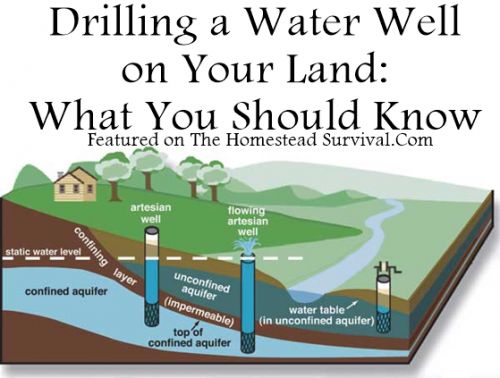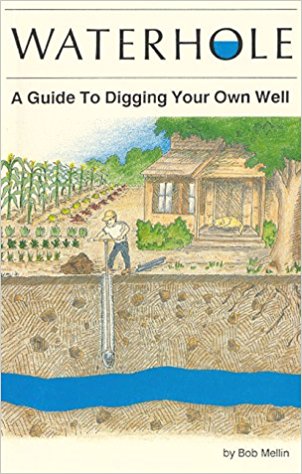Drilling Your Own Well, Just in Case
 Living in rural states like South Dakota is a blessing. People have a political compass that is wholesome. We haven’t forgotten the survival lessons of the Great Depression and our frontier heritage.
Living in rural states like South Dakota is a blessing. People have a political compass that is wholesome. We haven’t forgotten the survival lessons of the Great Depression and our frontier heritage.
One challenge, however, comes from not having the packed-in consumer base that makes services in large cities cheaper and more competitive. There’s little opportunity to shop around. Just the opposite, many of our basic utilities have only one supplier. Living right outside a larger city can mean a loss of high-speed Internet, for example. Woe to those farther out.
Other services like electricity and water and garbage removal remain monopolistic by nature, though there are small ways that individual homeowners can do it yourself. In case the grid were to go down for long periods (it’s happening all over the world, right now) then solar cells, wind propellers, and stream turbines can generate electricity. And if community water systems shut down or become too expensive, the homeowner might consider drilling for water the old-fashioned way, using PVC pipe: “There’s something that our ancestors all had on their property, which we don’t often have today. No, I’m not referencing a barn, although that would be true. I’m referring to a well.”
We all know that water has meant the rise of fall of civilizations. Wars have been fought over water from the beginning. Protecting your existing natural water sources, such as streams, remain bound by life-and-death legal protections. So who really owns the water? As the  state reports, “In South Dakota, all water (surface and ground water) is the property of the people of the state and whether you need a water right permit depends on the type of your water use.” The good news, however, is that “The only type of water use which does not require a water right permit is domestic use.”
state reports, “In South Dakota, all water (surface and ground water) is the property of the people of the state and whether you need a water right permit depends on the type of your water use.” The good news, however, is that “The only type of water use which does not require a water right permit is domestic use.”
Drilling your own water is like doing your own legal research. You can educate yourself about the basics. We live in a golden age of self-learning, thanks to the Internet and YouTube, however fragile these resources might be grid-wise. Giving up the do-it-yourself path, means a loss of hard-won cash, and also the knowledge that goes with exploring a project.
Most of what is taught in universities can be learned entirely on your own, given personal motivation and books and the Internet, can’t it? So learning how and where to drill a well on your own land should be a piece of cake. Just follow the links.
 Living in rural states like South Dakota is a blessing. People have a political compass that is wholesome. We haven’t forgotten the survival lessons of the Great Depression and our frontier heritage.
Living in rural states like South Dakota is a blessing. People have a political compass that is wholesome. We haven’t forgotten the survival lessons of the Great Depression and our frontier heritage. state reports, “In South Dakota, all water (surface and ground water) is the property of the people of the state and whether you need a water right permit depends on the type of your water use.” The good news, however, is that “The only type of water use which does not require a water right permit is domestic use.”
state reports, “In South Dakota, all water (surface and ground water) is the property of the people of the state and whether you need a water right permit depends on the type of your water use.” The good news, however, is that “The only type of water use which does not require a water right permit is domestic use.”
Great article! Very informative.
Good advice. I drilled one with an 8″ hand auger until I it the water table….then used a sand pipe….great water!
…until I hit the water table
Thanks, Lora. Each approach is different, some with more challenges. Gardeners will appreciate your use of the hand auger.